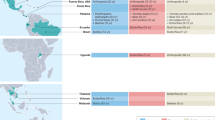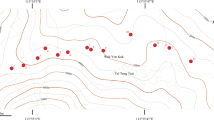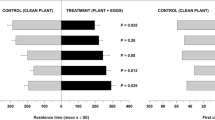Abstract
THE beetle alluded to in connection with this subject in the last number of NATURE (vol. xxxi. p. 615) is a probably undescribed species of Brachytarsus, a genus of the family Anthribidœ, allied to the Curculionidœ. Through the courtesy of the authorities at Kew I have had specimens before me. The idea that it acts as a sort of midwife to assist at the birth of infant Coccidœ is quite erroneous. The genus Brachytarsus is a true parasite on Coccus, and its habits, in this connection, in Europe, have long been known. It is of course interesting to find “unity of habit” prevailing in the case of Coccus Pé-la, even to its parasite; but with regard to the latter there is nothing new; some points in the general economy of the wax insect, in the notes published, are of far greater importance.
This is a preview of subscription content, access via your institution
Access options
Subscribe to this journal
Receive 51 print issues and online access
$199.00 per year
only $3.90 per issue
Buy this article
- Purchase on SpringerLink
- Instant access to full article PDF
Prices may be subject to local taxes which are calculated during checkout
Similar content being viewed by others
Author information
Authors and Affiliations
Rights and permissions
About this article
Cite this article
MCLACHLAN, R. Chinese Insect Wax. Nature 32, 6 (1885). https://doi.org/10.1038/032006a0
Issue date:
DOI: https://doi.org/10.1038/032006a0



